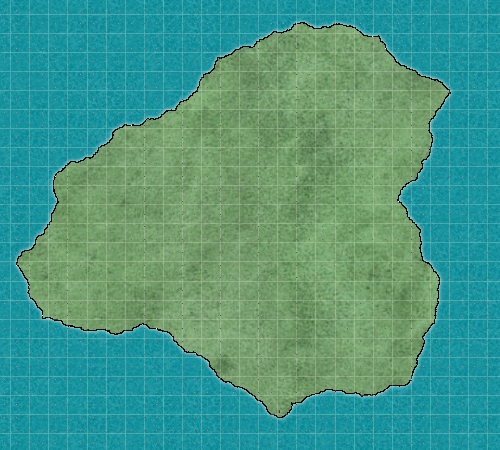Somewhat Realistic Mapping tips?
Hi, I have seen people pointing out things on maps that "just don't happen" and I would like to find out how to make a realistic world before I map it, so I can do it right; since I'm planning to write books about it when it's done.
So any tips you can give me about size and shape of land mass, where mountains should form, the behavior of the ocean (currents and such), and generally how things like that work. Also how rainforests and deserts and such would be situated.
I know this is an extremely broad question, any help you have the time and ability to give will be much appreciated! Thanks!
P.S. the image below is a continent I made for my world.
So any tips you can give me about size and shape of land mass, where mountains should form, the behavior of the ocean (currents and such), and generally how things like that work. Also how rainforests and deserts and such would be situated.
I know this is an extremely broad question, any help you have the time and ability to give will be much appreciated! Thanks!
P.S. the image below is a continent I made for my world.



Comments
Anyway, on to how things occur.
Deserts don't need heat to form, although that's where we tend to see them. They form mainly because of soil erosion, which requires wind and open spaces. As vegetation clears, or is cleared, there is nothing left to hold the topsoil in place and nothing to replace it. So, with each passing gust, a little bit more is swept away. There's a very "good" example of this occurring in China - you can see it on Google Earth.
Mountains occur when two land masses collide. These also tend to be regions of relative instability at the edges. If you look at the western USA and down into south America, you'll both the mountains formed by the collision of two massive tectonic plates, but also areas where earthquakes tend to predominate. Remember too that these plates extend out into the oceans - the highest mountain on Earth and the deepest valley are both underwater.
Water runs downhill. It's amazing how often mappers tend to forget that!
On Earth, currents are affected by many factors. One is the rotation of the Earth, another is temperature differentials. Warm water rises, and the space left vacant is then filled by the colder water. This creates a top to bottom current. If it's sufficiently spread out across a mass of water, you get surface currents. As the water moves into a colder surface area, it sinks again and, guess what?, that creates a further current. To take the example of the Atlantic: warm water from Florida flows up to Newfoundland, circles around to the western coast of Portugal, then down to Brazil and back up to Florida. This is why the Portuguese discovered Brazil - their boats followed the currents. The major currents in the southern Atlantic flow from Africa to South America, with a smaller return current down towards Antarctica.
If your world is like Earth, there will have been ice ages. These scour the land and carve out the big valleys in mountainous areas. Depending on where your world is in its cycle, somewhere like the UK could be frozen solid or a lush tropical forest! Don't forget that ice stores up water that would otherwise be in glaciers, rivers or oceans.
About the iris... I didn't trace the outside boundary of it, but a jagged outline just inside it! lol But, it isn't absolutely accurate, I just wanted it to have roughly the same design as what was in my eye.
I will have to think about how earth-like my world should be, I want it to seem real, but different.
Thanks again!
Questions to consider:
(1) Is your world earthlike, and if so, how earthlike? Or perhaps I should say, how scientific do you want to get? The planet's size and density will determine its gravity, which will have a bearing on its atmospheric density and composition. The type of star and its orbital distance will have an effect on the length of its year, and its average temperature; the amount of surface water will also affect its temperature by altering its albedo. The planet's composition, age and tectonics will affect its volvanic activity and mountain building.
(2) Do gods and/or magic have an effect on the landscape?
(3) How much do people affect the landscape? Major changes start coming with the neolithic agricultural revolution, primarily by clearing woods and over-intensive agriculture creating deserts or wastelands; by the Roman period people were draining marshes and diverting rivers. We still aren't capable of terraforming.
There's a good overview of the worldbuilding process here at the SFWA website here.
I'd also recommend the Rolemaster supplement Gamesmaster Law for a good overview (including mapping tips) from a fantasy gaming perspective.
For science fiction (also useful for the scientific aspects of fantasy worldbuilding), Stephen L Gillett's World-Building is the standard work. A little dated now, but still very good.
Steve
sdavies, Thanks! I'd like to hear your thoughts on this before I read it, it sounds good. Thank you!